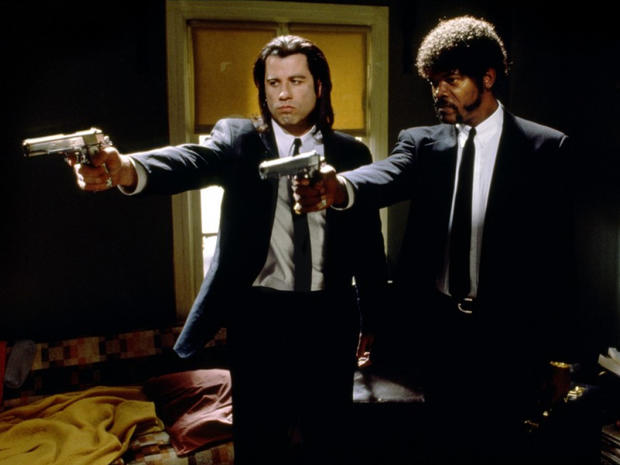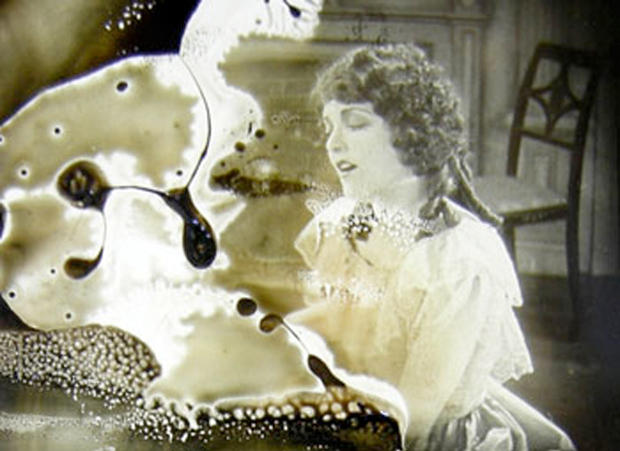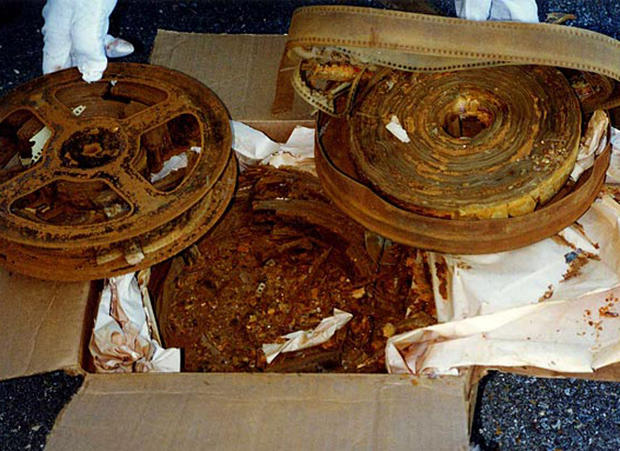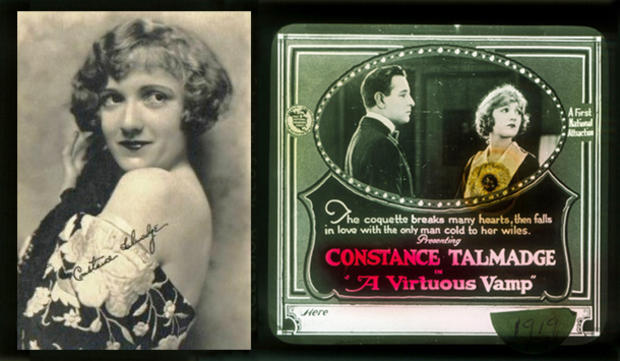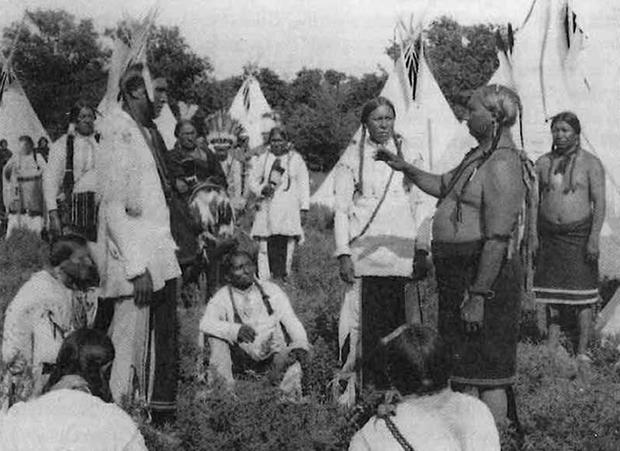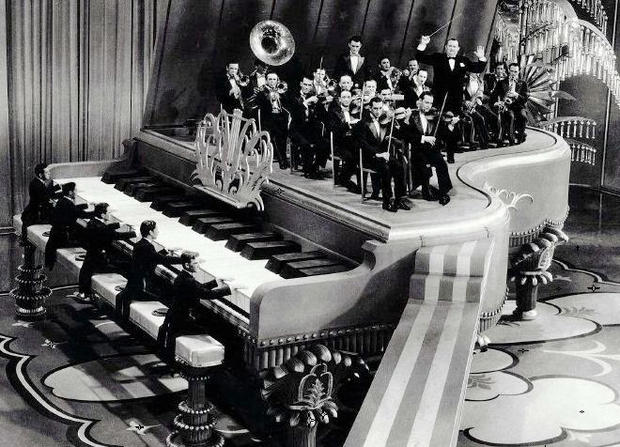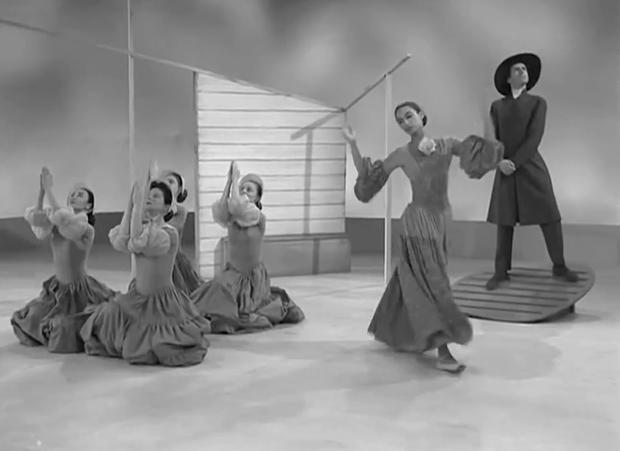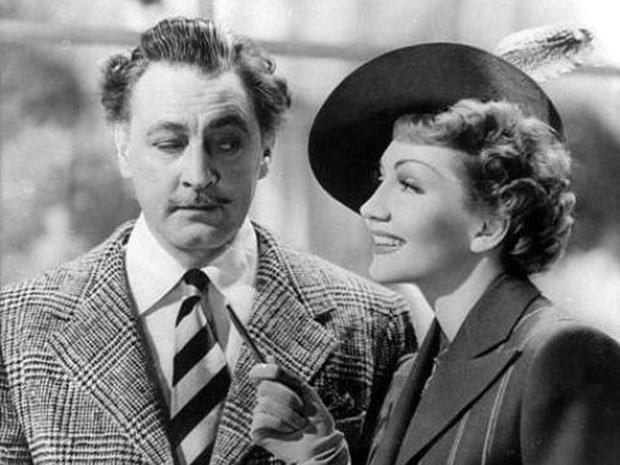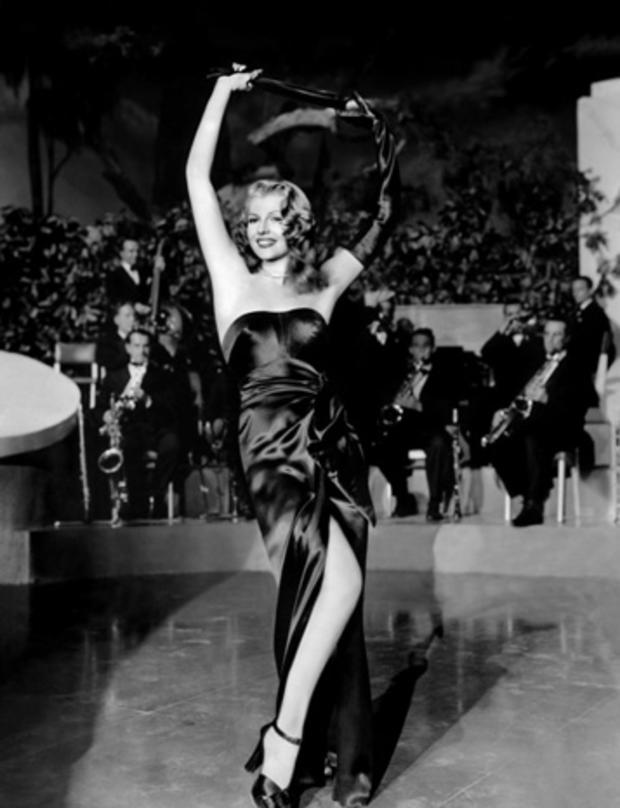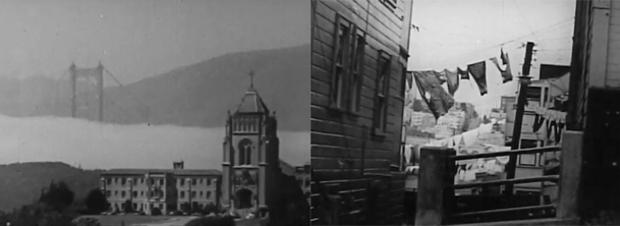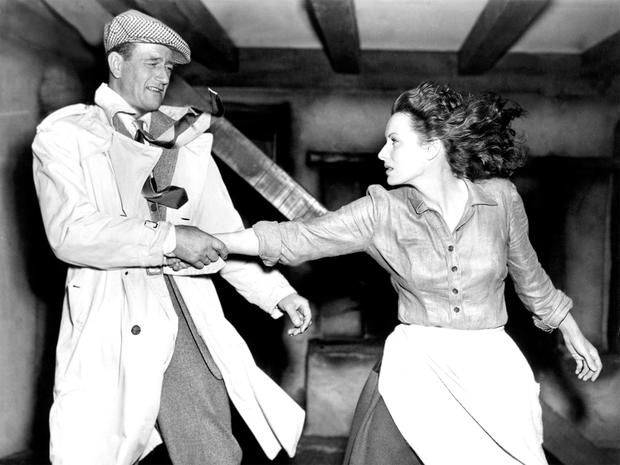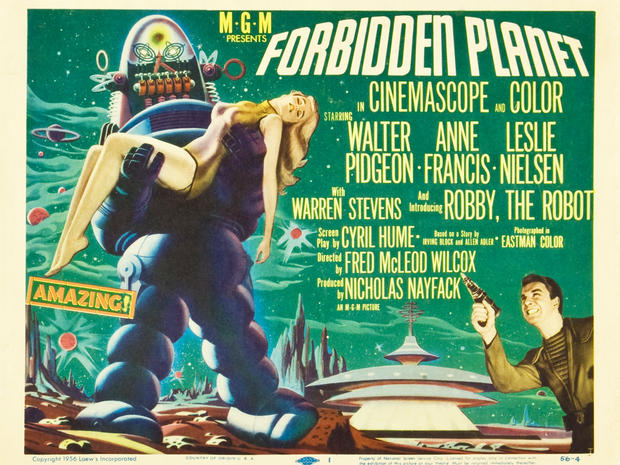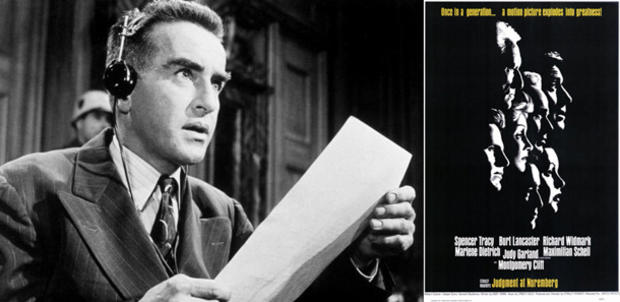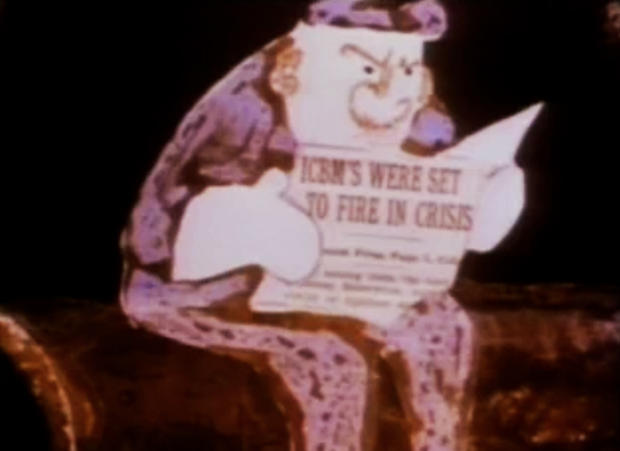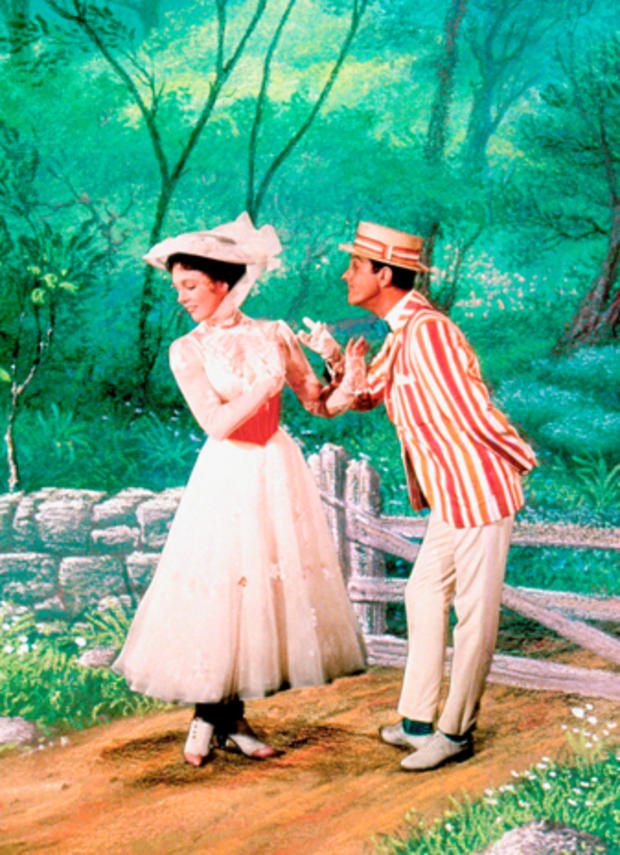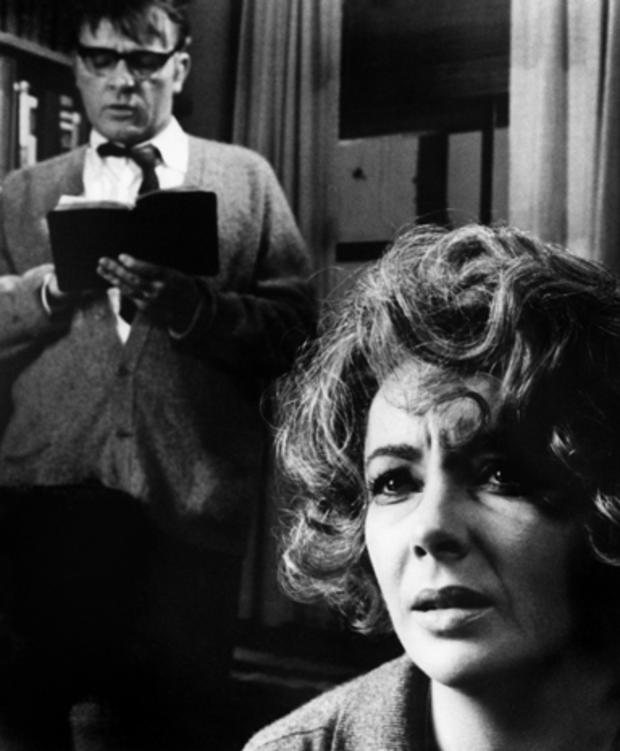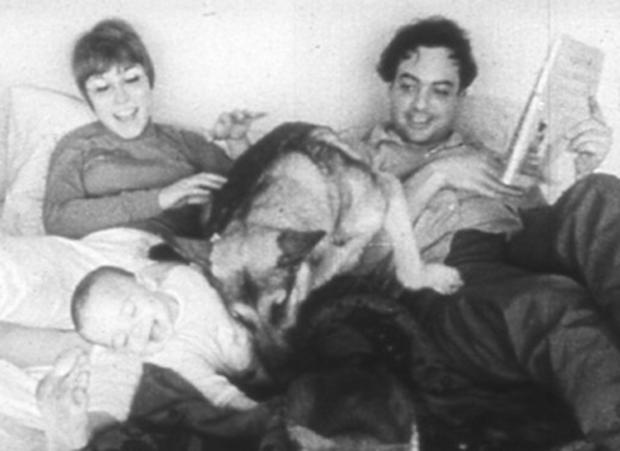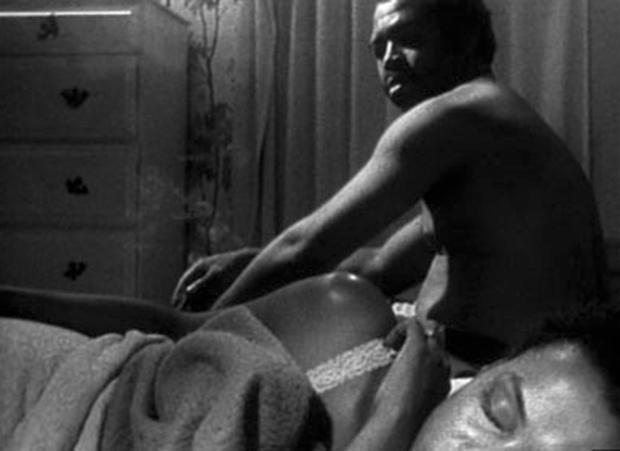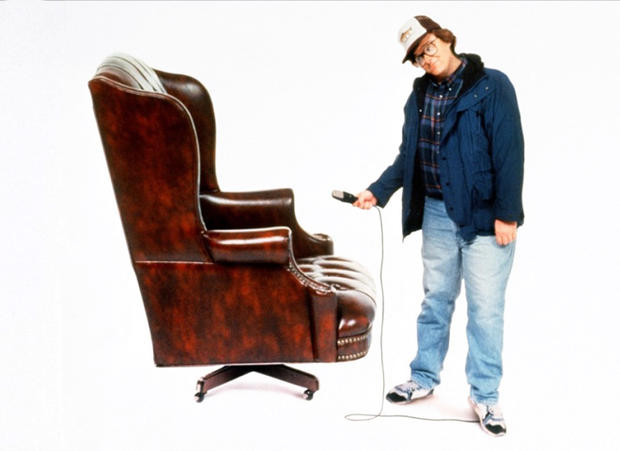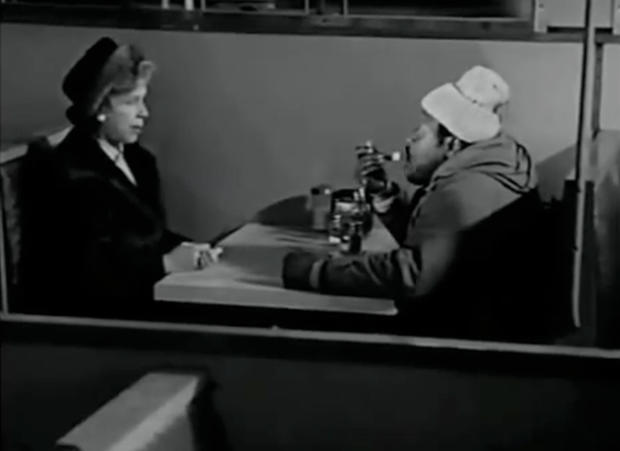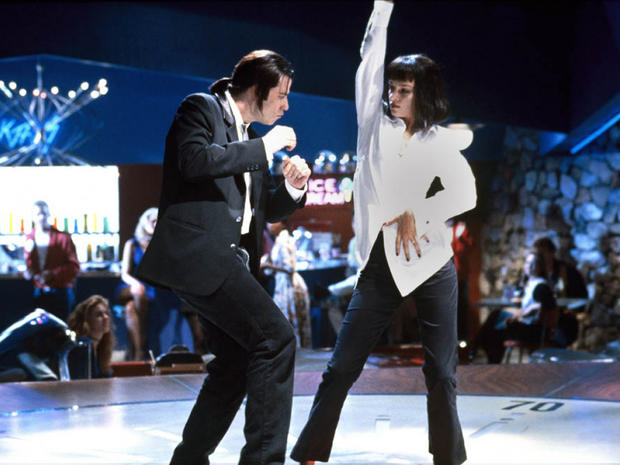2013 additions to National Film Registry
The Registry covers not just Hollywood classics but also documentaries, experimental films, cartoons, ads, educational and training films, music videos, and even home movies, in what is the most democratic and American of film lists.
By CBSNews.com senior producer David Morgan
Nitrate Decay
Left: This fragment from the 1923 film, "Maytime" exhibits considerable degradation.
Nitrate Decay
According to a recent Library of Congress report, 70 percent of films from the silent era are lost.
As titles are added to the National Film Registry, the Library works with production studios and archives to ensure that original versions are safeguarded.
Some recently restored films include: "Rebel Without a Cause," starring James Dean and Natalie Wood; Stanley Kramer's "Death of a Salesman"; the 1924 documentary “The Epic of Everest,” about an ill-fated attempt on the mountain; and "Too Much Johnson," a long-lost Orson Welles film shot as part of a theatrical production prior to "Citizen Kane."
This year's additions bring the total number of films on the Registry to 625. The 25 latest Registry titles are:
"A Virtuous Vamp" (1919)
"The Daughter of Dawn" (1920)
"The Daughter of Dawn" (1920), the first film made in Oklahoma, was shot using a cast of 300, entirely made up of the Comanche and Kiowa tribes, using traditional costumes, teepees, and weapons. The story of bravery, star-crossed lovers and duels to the death also featured buffalo hunts (staged at the Wichita Mountains Wildlife Refuge) and some striking visual compositions.
Writer-director Norbert Myles (described as "fiery," which may explain his being cast out of Hollywood studio offices) worked with a Texan named Richard Banks to produce the film, which was lost for decades following a single screening in Los Angeles. [Only some still images and a script existed in archives.]
In 2005, a private investigator obtained some nitrate reels that turned out to be "Daughter of Dawn," and turned them over to the Oklahoma Historical Society, which preserved the footage and commissioned a musical score by David Yeagley, a composer of Comanche descent.
"Ella Cinders" (1926)
Colleen Moore could play a vampish flapper, a cute-as-a-button charmer, or (in her last film) Hester in "The Scarlet Letter." In this 1926 comedy adapted from the syndicated comic strip (which itself was loosely based on the Cinderella story), Moore played Ella, a young woman who dreams of becoming a Hollywood star. The advice she derives from a book about achieving stardom ("Cross Eyes, or the ability to make the eyes appear crossed, have brought great fortune to certain moving picture actors" -- see, it worked for Meryl Streep!) leads to a trick shot of Moore engaging in eyeball gymnastics unparalleled in cinema, before or since.
"King of Jazz" (1930)
Don’t let the size of the piano players fool you: It's the piano that’s oversized, as is everything in "King of Jazz" (1930), a buoyant revue shot in two-strip Technicolor, featuring a bevy of top musicians under orchestra leader Paul Whiteman, and a young Bing Crosby.
Martha Graham Early Dance Films (1931-1944)
These four films, shot between 1931 and 1944, document the innovative choreography of Martha Graham, one of the most influential dancers of the 20th century. Graham stars in all four films - "Heretic," "Frontier," "Lamentation" and "Appalachian Spring" (pictured, left).
"Wild Boys on the Road" (1933)
Adapted from the Daniel Ahern story, "Desperate
Youth," "Wild Boys of the Road" was a drama of teenagers forced
by the Depression and family circumstances to hop trains in search of a job.
As was typical of pre-Production Code films, the movie featured scandalous behavior (one girl riding the rails is sexually assaulted by a train brakeman; the rapist is then attacked by the boys and dies in a fall; and another boy is tricked into sticking up a movie theater cashier and arrested). Police raids constantly interrupt the kids' trek east, where they end up living in a city dump.
But at least director William Wellman had more uplifting things in mind: he cast 19-year-old Dorothy Coonan as a wandering girl who tags along with the "wild boys" - and then married her.
"Midnight" (1939)
Written by Billy Wilder and Charles Brackett and directed by Mitchell Liesen, "Midnight" (1939) is a witty romantic comedy about a down-on-her-luck showgirl (Claudette Colbert) who, with the aid of a friend (John Barrymore) impersonates a Hungarian countess, only to fall in love with a decidedly lowly cab driver (Don Ameche).
"Men & Dust" (1940)
Pioneering documentary filmmaker Lee Dick produced and directed "Men & Dust," with her husband, writer-cameraman Sheldon Dick, to advocate for increasing awareness of health problems affecting miners in Kansas, Missouri and Oklahoma.
"Gilda" (1946)
Rita Hayworth's rendition of "Put the Blame on Mame," with hair cascading over a strapless evening gown, is one of the defining images of Hollywood black-and-white glamour in the 1940s. Hard to imagine, but the movie containing it - a film noir mystery co-starring Glenn Ford and George Macready, about a rather pointy love triangle – was just as scintillating and dangerous.
"Notes on the Port of St. Francis" (1951)
"Notes on the Port of St. Francis" was Frank Stauffacher's impressionistic view of the city on the bay, juxtaposing abstract visuals with narration by Vincent Price, based on poetry by Robert Louis Stevenson.
"The Quiet Man" (1952)
"The Quiet Man" is a reverie of Irish landscape and brogue - most of the exteriors were shot by director John Ford and DP Winton Hoch on the Emerald Isle - yet it is also famous for being one of John Wayne's rare romances. He plays an American ex-boxer who arrives in Inisfree to settle on his ancestral land, only to come up against the fiery Mary Kate Danaher (Maureen O'Hara), for whom romance is no simple matter.
"Forbidden Planet" (1956)
Science fiction films of the 1950s, though remembered fondly, were hardly the stuff of serious cinema. Rarely did studios spend real money on the genre (as reflected in the sets, costumes and special effects of typical sci-fi flicks).
But MGM's "Forbidden Planet" was a horse of a different color. Based nominally on Shakespeare's "The Tempest," the story tells of an interplanetary mission to Altair IV, where a prior expedition uncovered some rather dangerous stuff involving unseen monsters. Starring Leslie Nielsen, Anne Francis, Walter Pidgeon and Robby the Robot, the film also featured a superb electronic score by Louis and Bebe Barron.
"The Magnificent Seven" (1960)
While "The Seven Samurai" was inspired by the Hollywood Western, Hollywood took that sincerest form of flattery and returned the favor, remaking Akira Kurosawa's tale of avenging warriors but with an Old West flavor. Yul Brynner ("The King and I") bought the rights to "Samurai," picked John Sturges to direct, and fitted out the gang of gunslingers with young up-and-comers Steve McQueen, Charles Bronson, James Coburn, Robert Vaughn, Horst Buchholz and Brad Dexter. The result was a resounding success, made all the more memorable by Elmer Bernstein's classic score.
"Judgment at Nuremberg" (1961)
Montgomery Clift (left) in Stanley Kramer's "Judgment at Nuremberg" (1961), about the military tribunal weighing the complicity of civilians in crimes by the state. With an all-star cast (including Spencer Tracy, Maximilian Schell, Richard Widmark, Burt Lancaster, Marlene Dietrich and Judy Garland), the film was a dramatic tour de force nominated for 11 Academy Awards. It won two Oscars, for Best Actor Schell and screenwriter Abby Mann.
"The Hole" (1962)
Fears of global nuclear annihilation - so tender in the shadow of the Cuban Missile Crisis - were dramatized by animators John and Faith Hubley in the stylized, improvisational "The Hole." Two construction workers toiling underground engage in a conversation about current events, and the fear that a simple accident might trigger a nuclear holocaust. The film (featuring the voices of George Mathews and jazz musician Dizzy Gillespie) won an Academy Award for Best Animated Short.
"Mary Poppins" (1964)
Based on the book by P.L. Travers (and, as noted in the recent release "Saving Mr. Banks," not without a great deal of resistance on her part), the Walt Disney Studios' delightful musical confection stars Julie Andrews as the no-nonsense, magical nanny who seems perfectly at home inside animated landscapes as on London rooftops among dancing, sooty chimney sweeps. Dick Van Dyke costars in a film featuring memorable songs by the Sherman Brothers, including "A Spoonful of Sugar," "Chim Chim Cher-ee" and "Supercalifragilisticexpialidocious."
"Cicero March" (1966)
This cinema-verite documentary by the Chicago-based Film Group, Inc., captures the Sept. 4, 1966, march through the all-white Chicago suburb of Cicero, Ill., by African Americans demanding better economic and educational opportunities. Using light, handheld cameras, the filmmakers marched among the protesters, and caught the terrible anger from white counter-marchers walking alongside, with cordons of police trying (not always successfully) to keep the two factions apart.
"Who's Afraid of Virginia Woolf?" (1966)
Richard Burton and Elizabeth Taylor had already starred together in two films - the epic 'Cleopatra," in which their meeting on and off screen triggered a media firestorm, and "The Sandpiper" - before tackling the film version of Edward Albee's voracious stage play of a bickering, blistering couple.
Directed by Mike Nichols and co-starring George Segal and Sandy Dennis, as a young couple witnessing the take-no-prisoners attitude of Martha and George. With cinematography by Haskell Wexler that is as stark as the very blue dialogue that in effect ended the motion picture industry's Production Code governing obscenities in movies.
"Brandy in the Wilderness" (1969)
L.A. native Stanton Kaye, who grew up in the film industry (as
a youth he was terrified by "The Wizard of Oz"'s Margaret Hamilton,
who was on his school's PTA committee), created a "diary film"
starring himself and his girlfriend. The experimental filmmaker's
faux-autobiography - passages are either true-to-life or utter fiction - plays
fast and loose with linear storytelling as well as with character.
"The Right Stuff" (1983)
Tom Wolfe's novelistic portrait of test pilots and the ascent of the U.S. space program in the late 1950s and early '60s provided the basis for Philip Kaufman's thrilling exploration of the bravery, foolhardiness and grit exhibited by the Mercury 7. Sam Shepard is the film's linchpin as test pilot Chuck Yeager, who broke the sound barrier only to learn his breakthrough would be kept a state secret. Among those cast playing the nation's first astronauts were such dynamic actors as Ed Harris, Dennis Quaid, Fred Ward, Scott Glenn and Lance Henriksen.
The thrill of "The Right Stuff" is, amazingly, how low-tech it feels (no computer bytes were employed in the making of its effects), which is perfect for a story of engineers and adventurers touching the barrier of space on a wing and a prayer.
"Bless Their Little Hearts" (1984)
Director Billy Woodberry's UCLA thesis film, "Bless Their Little Hearts," about a working class African American family coping with the daily grind of life with its inherent sadness and humor, received a theatrical release and won critical praise. [The Village Voice's Jim Ridley wrote, "Its poetry lies in the exaltation of ordinary detail."]
Woodbury now teaches at the California Institute of the Arts, while his colleague, Charles Burnett (who wrote and shot "Bless Their Little Hearts"), was the director of another indie classic, "Killer of Sheep."
"Roger & Me" (1989)
Former Mother Jones editor and "TV Nation" host Michel Moore returned to his hometown of Flint, Mich., after its key employer, General Motors - central to the economy of the entire city - laid off 30,000 autoworkers. Moore's tongue-in-cheek attempts to interview GM head Roger Smith on camera (which get nowhere) are interspersed with his accounts of how former GM employees and others try to survive a time of economic upheaval.
The film was a major success for Moore, becoming the top-grossing documentary up to that time, and spawning a mini-sequel, "Pets or Meat," in which Moore returned to Flint to interview, among others, a rabbit breeder who offers bunnies for cuddling or dinner.
"The Lunch Date" (1989)
Columbia University student Adam Davidson's short film "The Lunch Date," centering on a chance encounter between a woman and a homeless man at a train station, won the 1990 Student Academy Award for its perceptive portrayal of how stereotypes affect perception and trust.
"Pulp Fiction (1994)
Audacious is barely enough of a word to describe Quentin Tarantino's feverish "Pulp Fiction," an homage to pot-boiler crime stories that plays with narrative structure in ways similar to Harold Pinter's plays but with much more gruesomely violent results. The overlapping stories tell of hit men (John Travolta and Samuel L. Jackson); a jealous mobster's wife (Uma Thurman); love-struck thieves (Amanda Plummer and Tim Roth) sticking up a diner; a boxer (Bruce Willis) who refuses to throw a fight; and a rather rueful tale of a keepsake watch. All things come full circle in a Mobius strip, with chance encounters and serendipity deciding the life-or-death fates of all. Tarantino's flashy editing made the film hip, but it was his now-trademark dialogue flourishes (including Jackson's penchant for preaching to those he's about to kill) that made the film most memorable.
"Decasia" (2002)
Found-footage films today have the connotation of being "fake," with filmmakers using the aesthetics of surveillance cameras, webcams, iPhones or other means to capture seemingly "found" documentary coverage of events, usually in the horror genre.
But Bill Morrison's "Decasia" is found footage of another sort. With music composed by Bang on a Can Collective's Michael Gordon, "Decasia" blends decomposing images from decades-old nitrate film that show the impermanence of images, and of memory.
For more info:
National Film Registry (Library of Congress)
National Film Preservation Foundation
By CBSNews.com senior producer David Morgan
